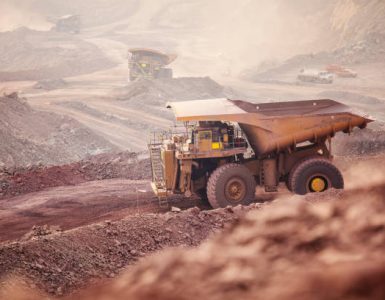A major “in situ” copper mine in Pinal County is finally in the home stretch to full commercial production after a years-long process that included fending off 10 lawsuits from the nearby town of Florence.

But last week at a state meeting to hear comments from the public about the approval of the company’s aquifer protection permit, a final major step, there was overwhelming support.
In fact, more than two dozen people spoke on behalf of the project, including three state legislators, one Florence council member, and the executive director of the Greater Florence Chamber of Commerce.
All spoke highly of Florence Copper’s actions so far, and about the promise of new jobs and economic stimulus for the region. Florence Copper is owned by Canadian Taseko Mines Limited.
“It’s a pretty exciting time for such a great project,” Roger Biede, executive director of the Greater Florence Chamber and a longtime Florence resident said during the virtual meeting that was held by the permitting agency, the Arizona Department of Environmental Quality (ADEQ). “It’s something that’s been needed in our town for years. And 2020 has only increased that need.”
Time to move on from “prison town” image
Originally a mining town, historic Florence is now known as a “prison town,” Biede said. This project brings the potential to move beyond that.
“This is a chance for us to be the model for an in situ mine for the entire world,” he said.
ADEQ, which has stated that the project has met all requirements to be permitted, is expected to issue its final determination after the public comment period ends Oct. 12.
It’s been a decade in the making to get to this milestone.
Hearing the support from the community was “remarkable and gratifying,” said Stacy Gramazio, public affairs manager for Florence Copper.
“We were certainly pleased and greatly encouraged by the display of overwhelming public and community support for the project during the ADEQ public hearing,” she said. “Well over 100 people joined in on the meeting and of the over 30 people who formally presented, all were in favor except one.”
Gramazio said if permitting is approved, construction for full scale commercial production should start in the first half of 2021.
In-situ extraction less harmful to planet
In-situ recovery mining is a process that is less invasive than traditional mining. The process involves dissolving copper underground into a liquid and pumping it to the surface.
Among its advantages:
- No waste or ore removal
- No open holes, waste dumps, leach pads or tailings
- Minimal noise, dust and greenhouse gas impact
The $200 million project to stimulate pandemic recovery
If the permit is granted, Florence Copper can move into full commercial production. That will help stimulate the pandemic recovery, said a number of people who spoke at the meeting including state legislators Rep. David Cook, Rep. Mark Finchem and Sen. Vince Leach.
Taseko expects to spend about $200 million to build the commercial plant, plus $50 million a year for sustaining capital.
During the 30-year life of the project, the mine will create significant economic benefits for Arizona and Pinal County, according to an economic impact study by the L. William Seidman Research Institute in the W. P. Carey School of Business at Arizona State University.
According to the report, Florence Copper will:
- Inject about $3.4 billion into the state economy with $2.1 billion remaining in Pinal County
- Create and support an annual average of 796 direct and indirect jobs in Arizona, with 480 in Pinal County
- Generate $1.9 billion in total personal income over the life of the project with $0.9
- billion going to Pinal County workers and business owners
- Generate local and state revenues exceeding $468 million with approximately $68.5 million directly accruing to the town of Florence and $33.5 million directly accruing to Pinal County
One of the most scrutinized mining projects in Arizona history
To get to this point, Florence Copper has undergone one of the longest, most thorough and detailed examinations of a mining project in the history of Arizona, company officials said.
Since 2013, the company has been fighting lawsuits filed by the town to block the mine. The town challenged the mine on the basis of a zoning ordinance passed in 2007 that prohibits mining on the property. But the court determined that Florence Copper is entitled to operate under the terms of its 2003 development agreement with the town.
Now, it’s time to move forward, said Michelle Cordes, the only current council member to speak at the meeting.
“The people of Florence need high paying jobs and economic activity that a project like Florence Copper can provide us,” Cordes said. “Let’s show the state we’re open for business.”
To read more about the project, go to: Florence Copper
















Add comment